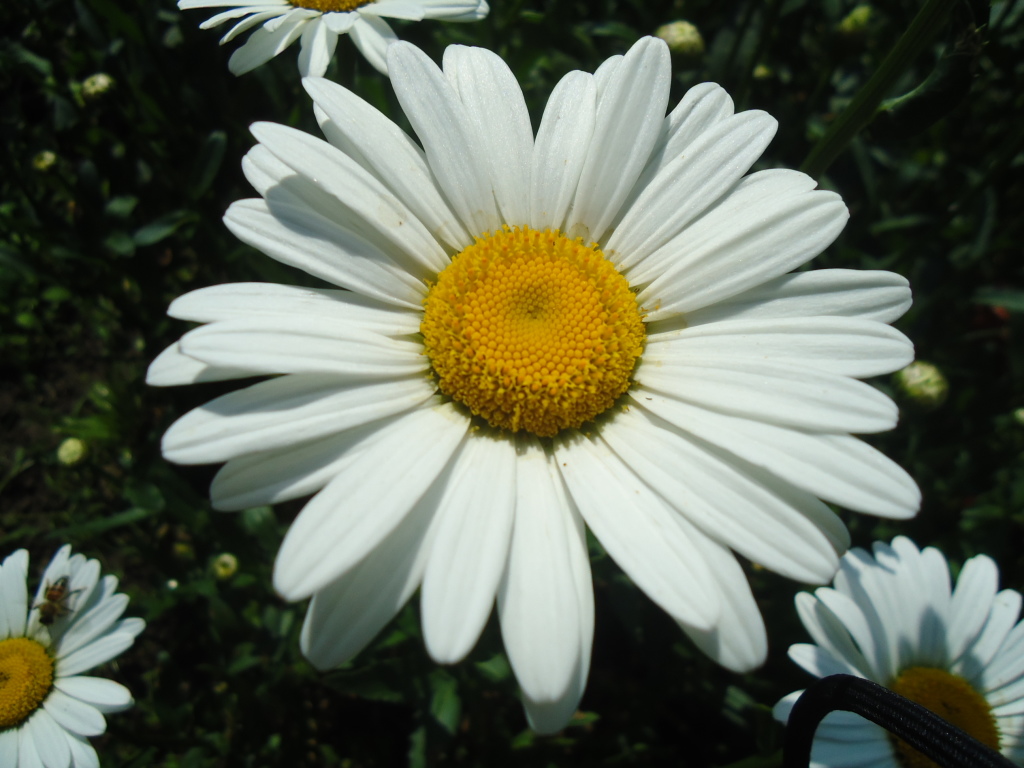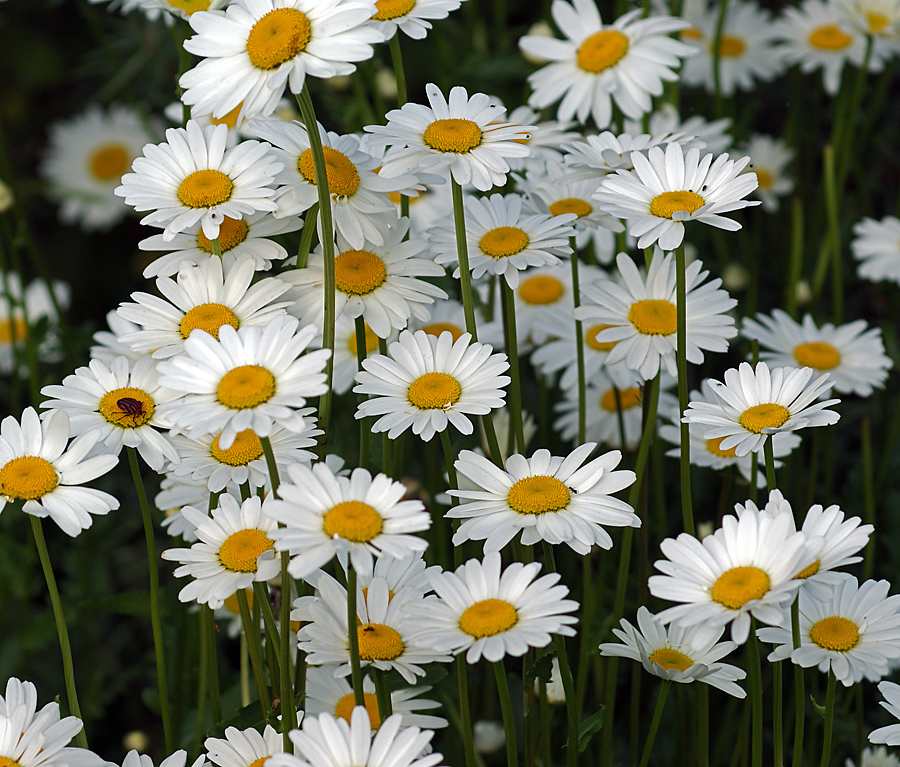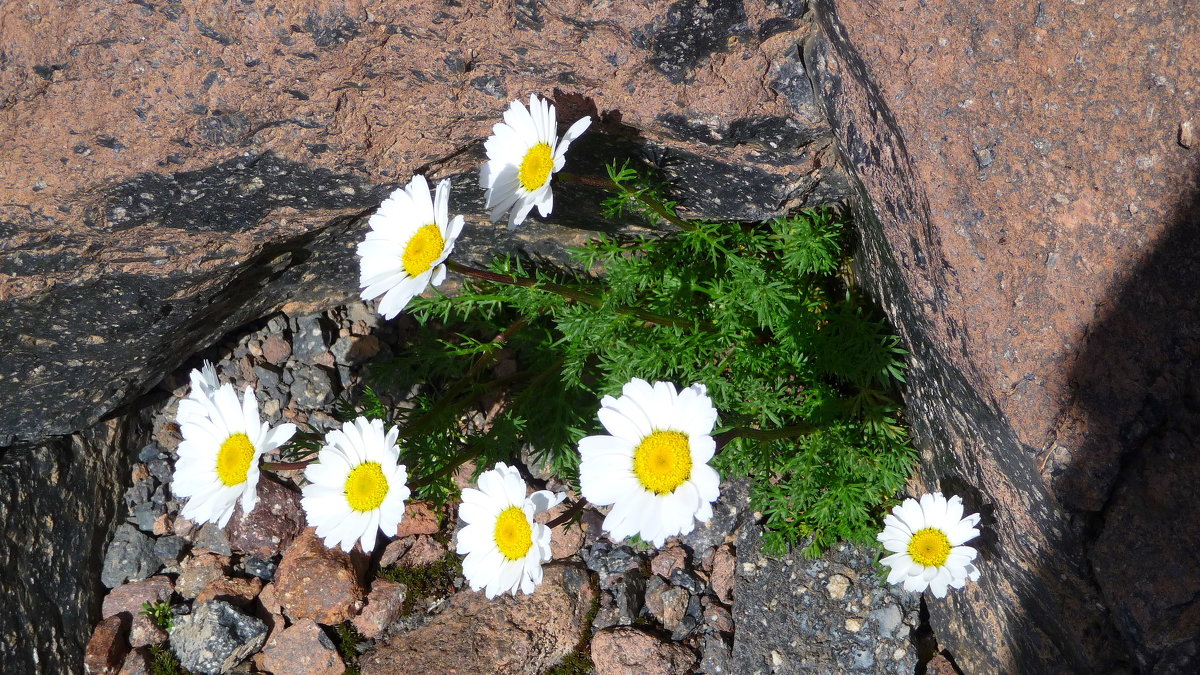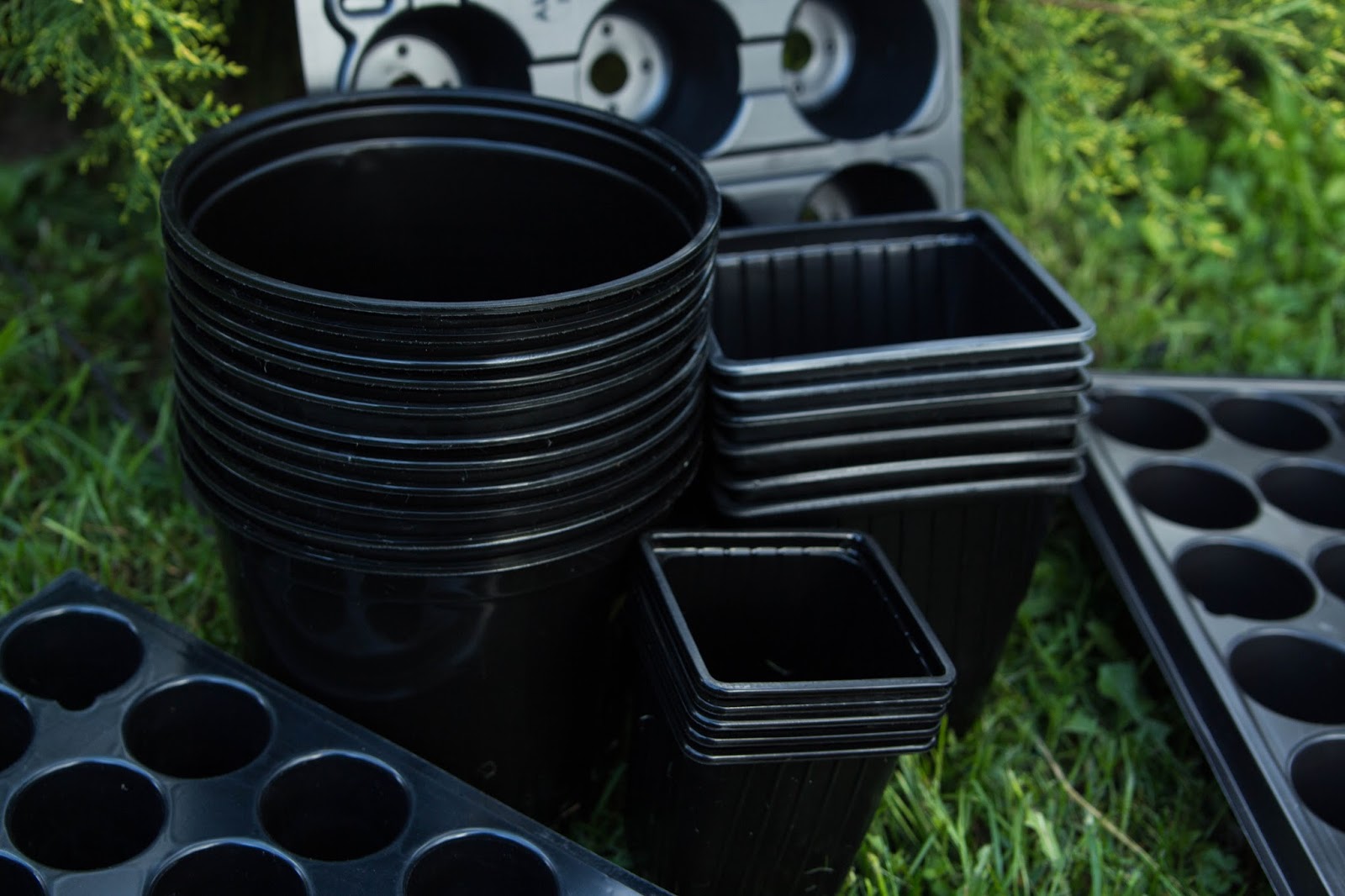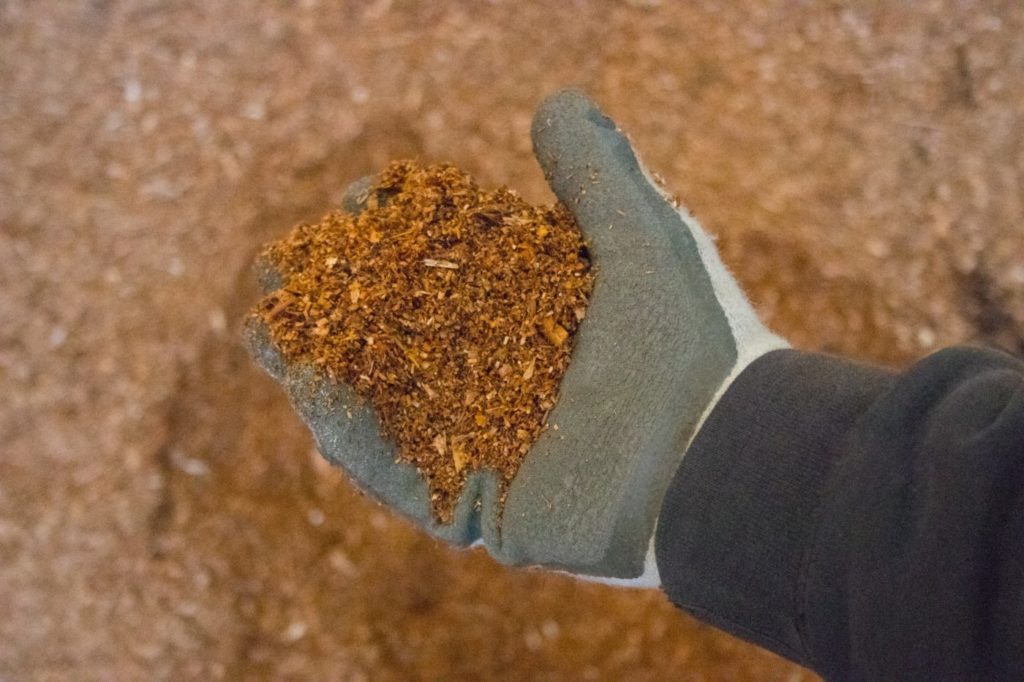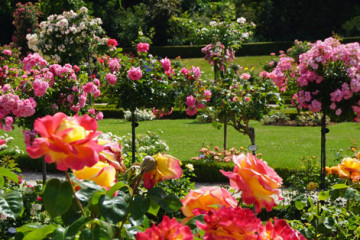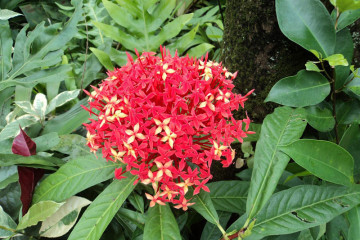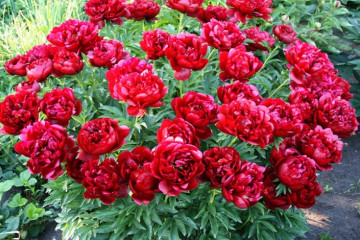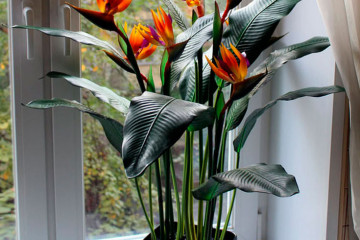Garden chamomile - features of growing at home
Content:
Garden chamomile is a perennial plant belonging to the Astrov family. The average height of the shrubs is 60 cm. The stem is thin, with bipinnate leaves. Large inflorescences can be up to 15 cm in diameter. They are collected from ligulate and non-ligated flowers of white and yellow, sometimes colored. Large petals are arranged in 1-2 rows. In terry forms, the petals are arranged in several rows.
The Legend of the Chamomile
In one village there lived a beautiful girl with blue eyes and blond hair. Her beloved Roman lived in the village next door. The couple enjoyed collecting flowers. And then one day Roman dreamed that the sage gave him a flower with white petals and a yellow core. In the morning he found him on his bed. The guy gave a flower to his beloved. The girl named the plant chamomile. Since then, the plant has been a symbol of lovers.
Known species
Today there are 25 types of garden daisies. Florists love the plant for its unpretentiousness and ease of care.
Meadow chamomile (Leucanthemum vulgare)
The botanical name for this chamomile is the common daisy or popovnik.
Structure:
- Stem 15-60 cm tall, erect.
- The rhizome is short.
- Basal leaves are collected in rosettes, stem leaves are oblong with denticles at the edges.
- Flowers are collected in single giant inflorescences-baskets. Their diameter is from 25 to 60 mm. The marginal flowers in the baskets are white and long, do not produce seeds. The middle ones are tubular with a yellow color, give seeds-fruits.
The plant is common in all regions of Eurasia.
Kuril daisy (Leucanthemum kurilense)
Structure:
- Stems are thin, up to 20 cm high.
- The rhizome is thick and fleshy.
- Leaves are three-lobed or five-lobed, palmate plates.
- Flowers - single or few inflorescences with white ligulate and yellow tubular flowers.
- It grows on rocks, coastal sands, rubble taluses of the East Asian islands of Honshu, Hokkaido, Kuril Islands.
Marsh leopard (Leucanthemum paludosum)
A perennial herb in which:
- Stems are straight, weakly branching. They grow from 30 cm to 1 m.
- The rhizome is small and fibrous.
- Leaves are oblong-shaped plates with a wavy edge. There are stem and basal.
- Flowers - large inflorescences-baskets, reaching 12 cm in diameter. Formed at the tops, composed of tubular yellow in the center and ligulate white at the edges.
- It is found in regions with a temperate climate.
Leucanthemum maximum
Description of appearance:
- Stems are thin, up to 1 m high.
- The rhizome is short terrestrial.
- Lower leaves - petiolate, stem - oblong.
- Flowers are collected in inflorescences-baskets, the diameter of which reaches 10-12 cm.
Favorite varieties of gardeners
Chamomile is very popular in gardening.Plants are unpretentious, perfect for the implementation of landscape ideas. The most widespread are the following varieties:
- Alaska. A variety that reaches 80-90 cm in height. He has a huge flower diameter - 12 cm. The plant loves areas protected from wind and drafts. Alaska is sun-loving, frost-hardy and tolerant of lack of moisture.
- Silver princess. The plant reaches 35-40 cm in height. Flower - about 10 cm. Likes regular watering. Differs from others in long flowering. A great option for a summer residence.
- North Star. This shrub reaches 70 cm in height. Flower diameter 12 cm. Calmly tolerates drought.
- Stern von Antwerp. A meter-long plant with a flower diameter of 10 cm. Loves the sun and regular watering.
- Beethoven. This variety reaches 80 cm. The diameter of the flower is 12 cm. It is distinguished by abundant splendor of shrubs.
- Schwabengrub grows up to 80 cm. The diameter of the flower is 10-12 cm. This is a terry daisy.
- Little Princesses. Low chamomile no more than 10-12 cm high. Flower diameter - 6-7 cm.
- Maxima Koenig. Nivyanik variety up to 70-100 cm in height. Flower diameter 10-12 cm.
- Sanssouci. It is called a giant flower. It grows up to 1 m in height. Flower diameter from 12 cm.
- Mei Queen has average characteristics. It is considered short, since its height is no more than 50 cm.
- Persian. This chamomile variety is perennial and has a characteristic pink color. Loves shade and blooms all summer.
- Red feverfew. The shrub is similar to the previous one. These perennial daisies are distinguished by bright red inflorescences.
Reproduction of daisies
Gardeners use several methods of breeding the daisy. The plant can be obtained from seed planted outdoors or by growing seedlings. Also, chamomiles easily tolerate the division of the bush, which prolongs their life and rejuvenates perennial crops.
Seed propagation
Cultivation of a lemongrass through seedlings has an advantage. This method allows you to achieve flowering in the first season. Sowing is carried out at the end of winter. To do this, use trays, wide cups, boxes, bowls. The soil mixture for planting seeds is made from high-moor peat and sand. You can also purchase ready-made soil for planting flower seedlings. The soil must be disinfected using a potassium manganese solution.
It is important to make a drainage layer at the bottom of the container. Next, fill the container with soil, leaving 20-30 mm below the edge. The soil surface must be leveled and the seeds distributed evenly. They should be deepened no more than 10 mm. Sprinkle on top with a layer of earth and moisten with a spray bottle.
The container with crops should be placed in a warm place where the temperature reaches 22 degrees. After the appearance of the first seedlings, the temperature regime can be lowered to 18-20 degrees.
Dive seedlings
The dive of seedlings is carried out after the sprout has two true leaves. In nivyaniks, this happens about a month and a half after sowing seeds. To dive, you need a small portable spatula or a regular table fork. Plants are still fragile, so you need to act carefully. Each sprout is removed with a small clod of earth and placed in a separate container, such as a disposable glass. There should be a drainage hole at the bottom of the container. In the case of cups, it is enough to make cuts at the fold with scissors.
After the dive, it is necessary to feed in about two to three days. An organic solution is suitable for the procedure. The next feeding can be done in 20-30 days. When the plants get stronger, they can be transplanted into open ground.
Transfer to a permanent place
The planting holes should be approximately 0.3 m deep. The distance between them varies from 0.3 to 0.7 m. The distance between the rows is about 20 cm.Before planting, it is advisable to add 20 g of mineral fertilizer or 300-400 g of humus or compost to the hole.
The glass should be carefully removed. Place a plant with a formed root system in a hole and cover with nutritious soil. The planted plants need abundant watering. After the water is completely absorbed into the soil, the area should be covered with a layer of mulch. For this you can use sawdust.
Outdoor cultivation
The site for planting daisies must be selected carefully. Bush chamomile can be in the same place without transplanting for up to 7 years. The area must be well drained. The future landing site needs to be cultivated to a depth of 0.25-0.3 m. Florists prefer black soil. In dry, poor soil, the inflorescences will be significantly smaller.
Dig up the soil and level the surface. Further, at a distance of at least 20 cm, make grooves and sow seeds in them, deepening into the soil no more than 20 mm. After planting, the soil must be watered abundantly. After a day, the site should be covered with a layer of mulch. After germination, the crops are thinned out.
Transplant features
In the fall, when small and large garden daisies have faded, they can be replanted. This should be done after the heat has subsided and before the onset of cold weather.
The procedure is carried out in the following sequence:
- The bushes are dug out with a large clod of earth using a large garden pitchfork.
- The lump is placed in a large container with water until the earth is completely soaked.
- Healthy and strong shoots with a large rhizome are transplanted to a new location.
Seed collection
To collect seeds of white and multi-colored plants, it is necessary to select and outline the best flowers during flowering. They must dry completely: stem, leaves, flower. By this time, the middle will turn brown. You need to press on it and collect the seeds.
Plant care
Planting and caring for a perennial large garden chamomile is not difficult, but some features still exist:
- wilted inflorescences should be cut regularly;
- after the end of the flowering period of perennial varieties, the stems must be cut at the root;
- for wintering, plants should be covered with insulating materials or a layer of foliage. To prevent debate in early spring, the shelter must be removed;
- watering should be done in the morning or evening, when exposure to direct sunlight is minimal.
Ornamental daisies do not tolerate acidic soils. Experienced gardeners add dolomite flour to soil with an overestimated pH balance. For adequate nutrition of ordinary and terry perennial chamomiles, humus, peat or compost should be used. In the spring, when there is an active growing season, nitrophoska is more suitable for feeding: two tablespoons of complex fertilizer should be diluted with water.
Large varieties of chamomile are fed with ammonium nitrate. Fertilizer is scattered between rows of about 20 g per 1 sq. meter. You can repeat the procedure if the foliage turns pale and during the period of bud formation.
Diseases of the sycamore
With frequent and abundant watering, chamomiles get sick with fungus, rust or powdery mildew. For treatment, a one percent solution of Bordeaux mixture is used. Plants are sprayed with it at least 4 times.
Slugs and snails should also be avoided. Nivyanik is a delicacy for them. Get rid of pests with a weak coffee solution.
The selection of garden daisies is huge. Nivyanik will perfectly complement the plots equipped with stone and wood. These flowers will add flavor and romance to the landscape of any garden.
